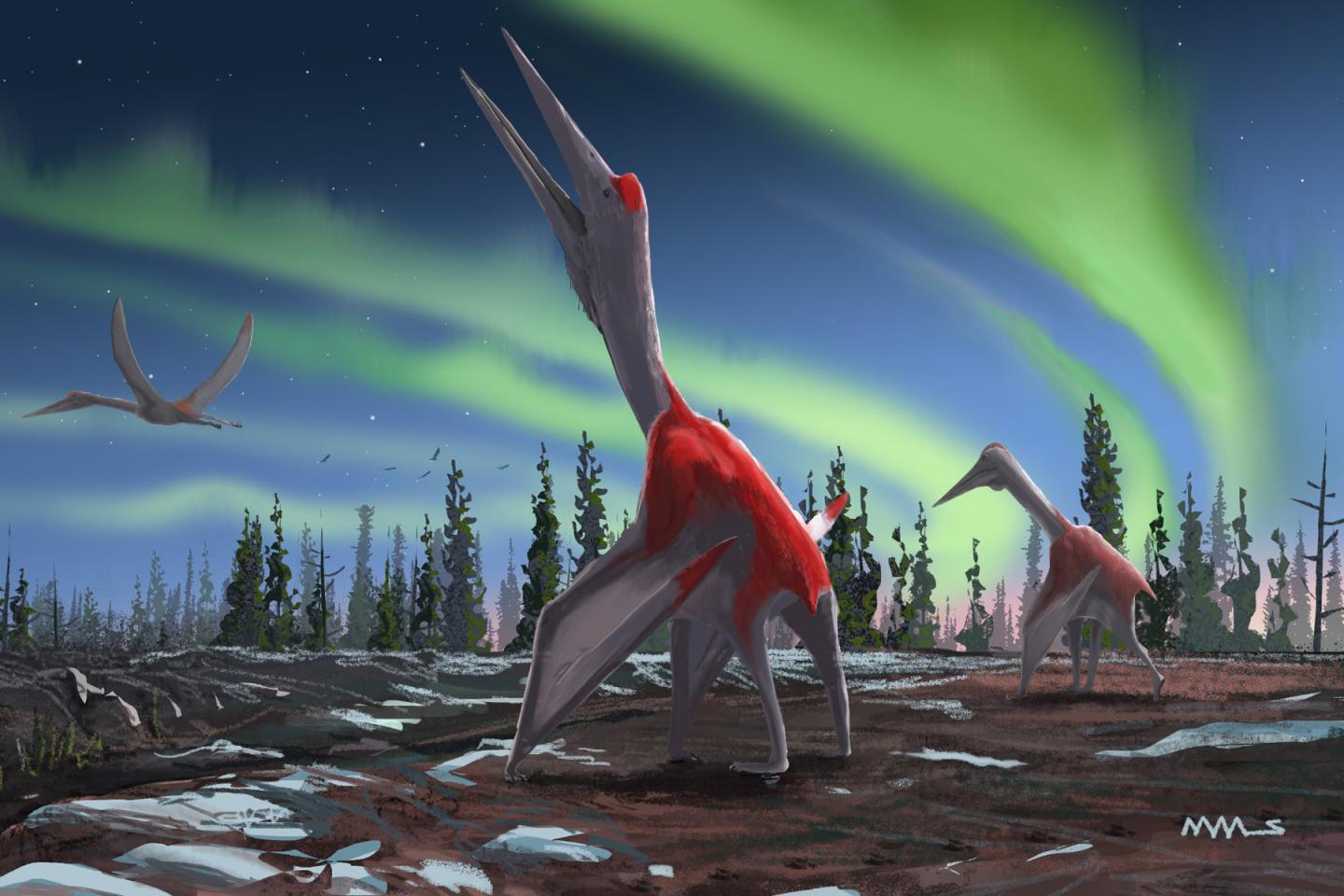Cryodrakon boreas was most likely heavy bodied and used flight to escape danger.
A researcher with the University of Southern California Integrative Anatomical Sciences at the Keck School of Medicine has discovered a new species of Pterosaur that once flew the skies of North America about 75 million years ago.

David Maas
Cryodrakon boreas was most likely heavy bodied and used flight to escape danger.
"These are among the most popular and charismatic of all fossil animals," Michael Habib, assistant professor of Integrative Anatomical Sciences at the Keck School of Medicine of USC and research associate at the Dinosaur Institute of the Natural History Museum of Los Angeles County, said in a statement released by the university.
"They have been inspiration for countless movie monsters, they were critical parts of global ecosystems worldwide during the Age of Dinosaurs, so they are key to understanding the ecology and extinctions of that time, and, just like flying animals today, they could carry important clues about how animals at the time responded to major changes in climate."
Paleontologists In China Discover Pterosaur Nest Of Ancient Reptile Eggs
The giant flying reptile, named Cryodrakon boreas, or Frozen Dragon of the North, is different from the largest known pterosaurs, and have distinct characteristics, such as the shape of the vertebrae, cervical bones and leg bones. These differences would have affected the spinal column, the shape of th legs, and size of the reptile, the researchers said in a news release put out by the university.
"This type of pterosaur (azhdarchids) is quite rare, and most specimens are just a single bone. Our new species is represented by a partial skeleton. This tells us a great deal about the anatomy of these large flyers, how they flew, and how they lived," Habib said.
Based on the data collected from the fossils, Habib said Cryodrakon is similar in size to Quetzalcoatlus, a giant flying reptile found in Texas, but was probably “heavier and more robust,” challenging the notion that these animals were ultralight animals. The researchers surmise that Cryodrakon boreas was a muscular ground hunter which relied on flight to escape danger.
"This particular group of pterosaurs includes the largest flying animals of all time. Their anatomy holds important clues about the limits of animal flight and may be important in the future for biologically inspired mechanical design for flight," Habib said.


